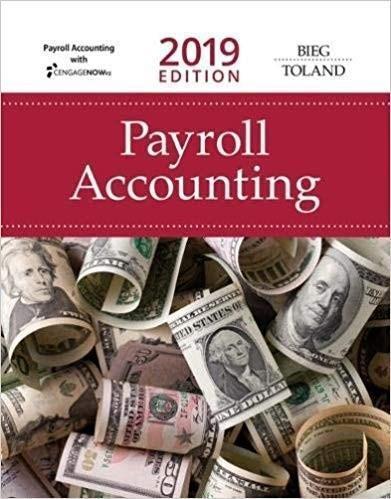Answered step by step
Verified Expert Solution
Question
1 Approved Answer
1. Which of the following is an advantage of budgeting? A. Manager satisfaction B. Bigger profits C. Lower costs D. Enhanced coordination 2. A budget
1. Which of the following is an advantage of budgeting? A. Manager satisfaction B. Bigger profits C. Lower costs D. Enhanced coordination 2. A budget that is not adjusted for the actual level of activity is a: A. sales budget B. flexible budget C. static budget D. zero base budget 3. A management approach that investigates only those variances that are significant. A. Management by exception B. Management by differences C. Management by variances D. Management by investigation 4. Which of the following depends directly on the production budget? A. Selling and administrative expenses budget B. Capital acquisitions budget C. Labor budget D. Sales budget 5. Indicates when a loan can be repaid. A. Capital acquisitions budget B. Budgeted balance sheet C. Selling and administrative expenses budget D. Cash receipts and disbursements budget 6. Which of the following budgets has both a variable and a fixed component? A. Cash budget B. Direct labor budget C. Manufacturing overhead budget D. Sales budget 7. Differences between budgeted costs and actual costs are called: A. differences. B. exceptions. C. variances. D. estimates. 8. The primary reason for using a flexible budget is to: A. allow management to manipulate costs in order to meet goals. B. compare actual costs with what budgeted costs would be at the actual activity level. C. eliminate the fluctuations in the production process. D. measure the difference between actual activity and budgeted activity. 9. Required units to be produced is equal to: A. expected sales + desired ending inventory - beginning inventory B. expected sales - desired ending inventory + beginning inventory C. expected sales + desired beginning inventory - ending inventory D. expected sales - desired ending inventory + beginning inventory 10. Required purchases of direct materials is equal to: A. amount required for production - desired ending inventory + beginning inventory B. amount required for production + desired ending inventory + beginning inventory C. amount required for production - desired ending inventory beginning inventory D. amount required for production + desired ending inventory - beginning inventory 11. Which of the following is not included in the EPS ratio? A. Preferred stock dividend B. Net income C. Common stock dividend D. Number of common shares outstanding 12. Which of the following consists of cash flows from raising capital, making payments to investors, and repaying amounts borrowed? A. Operating activities B. Financing activities C. Investing activities D. Selling activities 13. Is an estimate of the incremental profit generated by each dollar of sales: A. price-earnings ratio. B. return on sales. C. return on total assets. D. gross margin percentage. 14. Is a measure of investors expectations about a companys future profitability. A. EPS B. Price-earnings ratio C. Gross margin percentage D. Return on total assets 15. Consists of calculating the dollar change in financial statement amounts across time. A. Vertical analysis B. Circular analysis C. Horizontal analysis D. Diagonal analysis MATCHING A - Match the following terms to the statements shown below. Use each term only once. Use capital letters for your answers. Enter your answer in the space beside the question number. A. Sales budget F. Selling & administrative expenses budget B. Production budget G. Capital acquisitions budget C. Material purchases budget H. Budgeted cash receipts and disbursements D. Labor budget I. Budgeted income statement E. Manufacturing overhead budget J. Budgeted balance sheet ______ 1. Shows what property, plant, and equipment will be purchased. ______ 2. Includes both variable and fixed production costs. ______ 3. Shows when there will be excess cash available. ______ 4. Based on the amount of time it takes to produce a finished unit. ______ 5. The second component of the master budget. MATCHING B - Match the following terms to the statements shown below. Use each term only once. Use capital letters for your answers. Enter your answer in the space beside the question number. A. Accounts receivable turnover F. Financial leverage B. Asset turnover G. Horizontal analysis C. Current ratio H. Investing activities D. Days sales in accounts receivable I. Price-earnings ratio E. Debt-to-equity ratio J. Return on total assets ______ 6. Makes the return on common stockholders equity higher than the return on total assets ______ 7. Includes an adjustment for interest expense, net of taxes. ______ 8. Measures the efficiency with which total assets were used. ______ 9. Analyzes changes in individual financial statement amounts over time. ______ 10. Is a general measure of a firms liquidity. MATCHING C - Match the following terms to the statements shown below. Use each item only once. Use capital letters for your answers. Enter your answer in the space beside the question number. A. Days sales in inventory F. MD&A B. Earnings per share G. Quick ratio C. Financing activities H. Return on common stockholders equity D. Gross margin percentage I. Times interest earned E. Inventory turnover J. Vertical analysis ______11. Analyzes financial statement amounts in comparison to a base amount. ______ 12. An annual report section devoted to managements explanation of results. ______ 13. Measures profitability in relation to stockholders investment. ______ 14. Is an estimate of the incremental profit generated by each dollar of sales. ______ 15. Is a stringent test of a companys liquidity
Step by Step Solution
There are 3 Steps involved in it
Step: 1

Get Instant Access to Expert-Tailored Solutions
See step-by-step solutions with expert insights and AI powered tools for academic success
Step: 2

Step: 3

Ace Your Homework with AI
Get the answers you need in no time with our AI-driven, step-by-step assistance
Get Started


